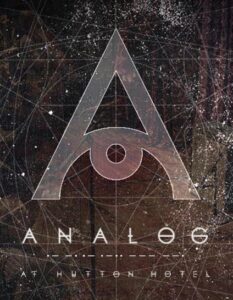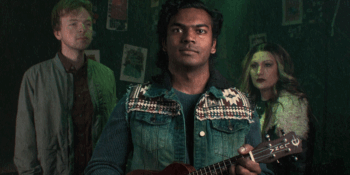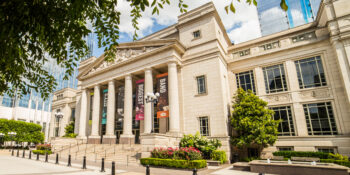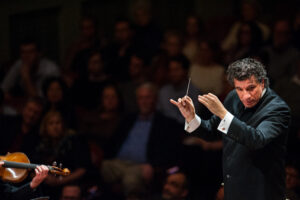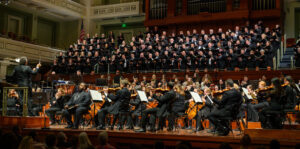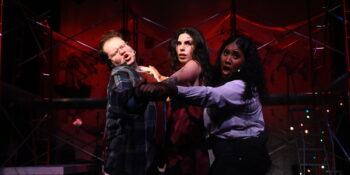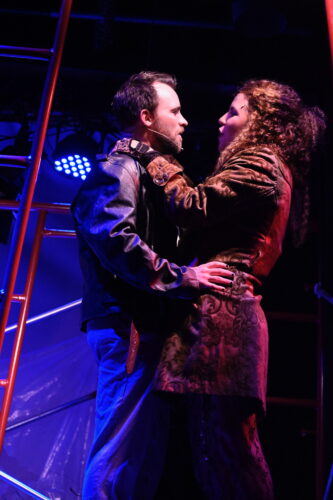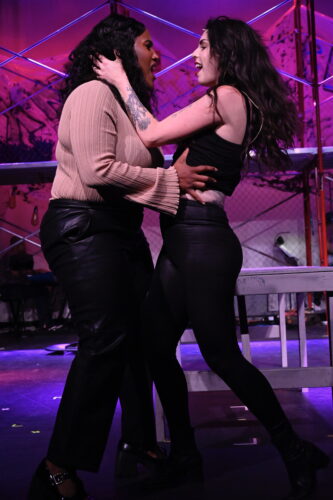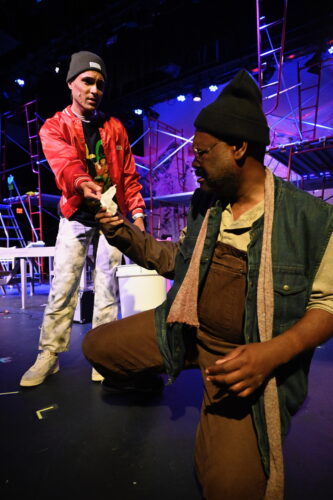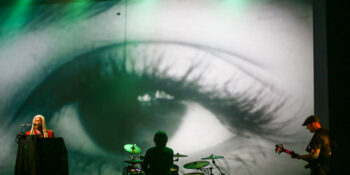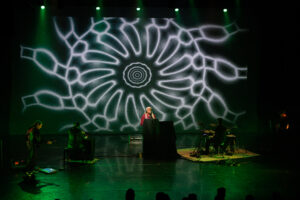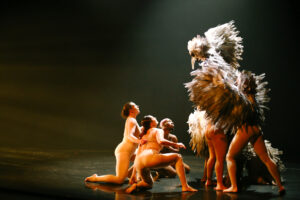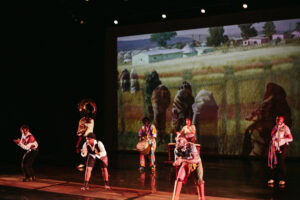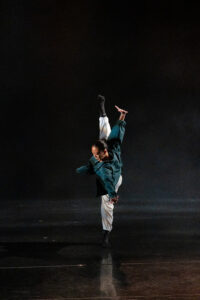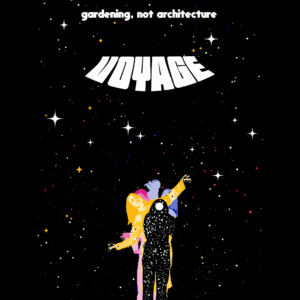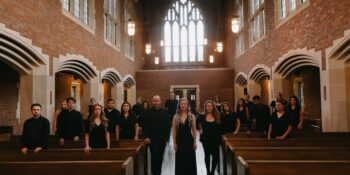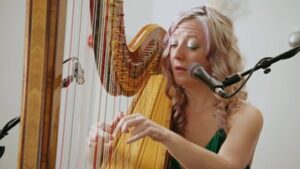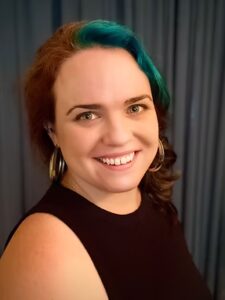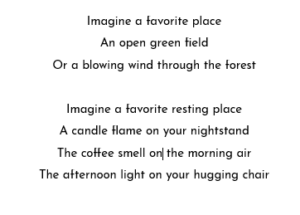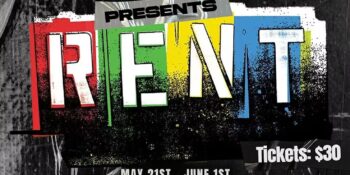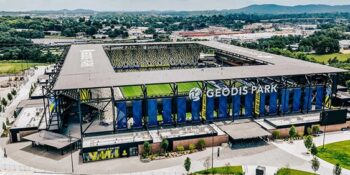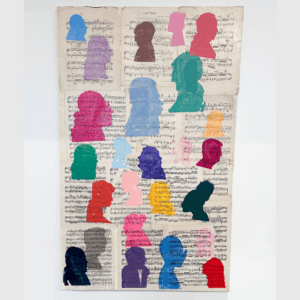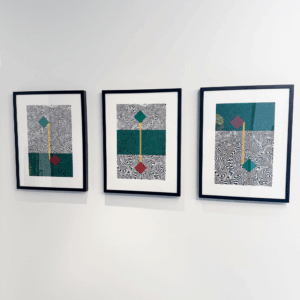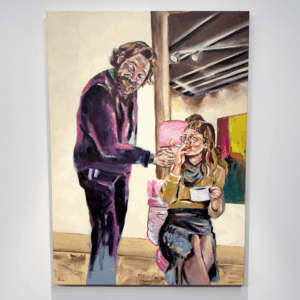The Jazz Beat — June
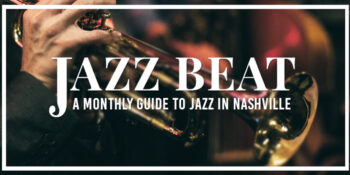
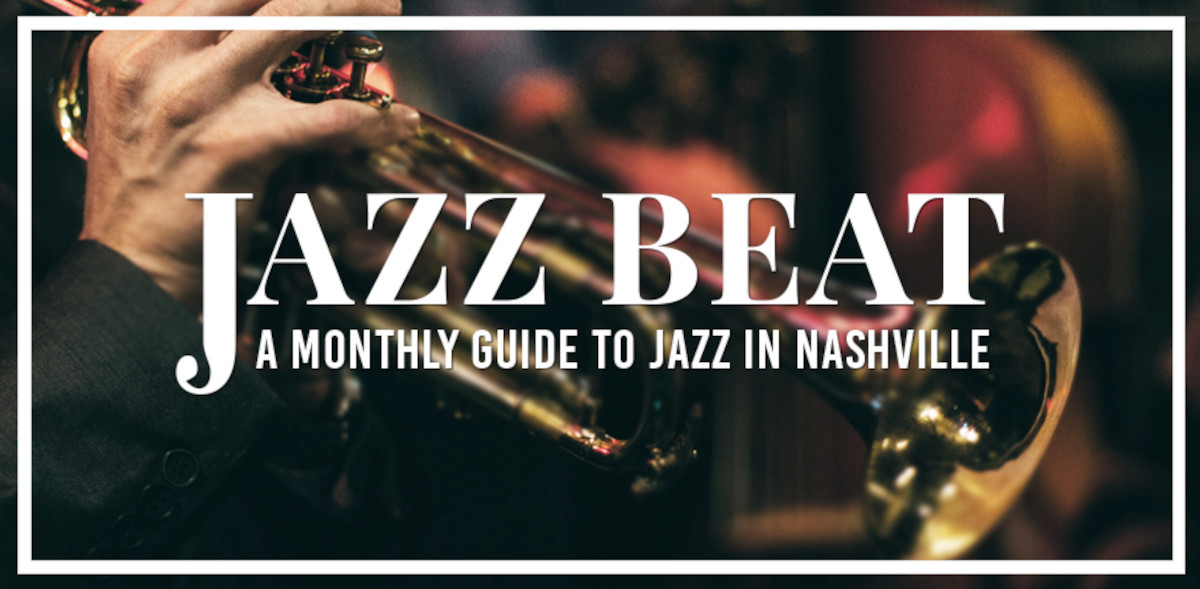
Hello, all, and welcome back to this regular column here at Music City Review. Here, we will update you with the most can’t-miss jazz events happening in Music City, so you can be sure to catch all your favorites, as well as discover new ones along the way. Get out there and support your local musicians and keep Music City thriving! We are always looking to promote great music that may not get the attention it deserves. Have an event you think should be included in the next issue? Email me at: JazzBeat@musiccityreview.com
If you wish to subscribe to this guide, click here! Links to specific venues below:
Hello, all, and welcome back to this regular column here at Music City Review. Here, we will update you with the most can’t-miss jazz events happening in Music City, so you can be sure to catch all your favorites, as well as discover new ones along the way. Get out there and support your local musicians and keep Music City thriving! We are always looking to promote great music that may not get the attention it deserves. Have an event you think should be included in the next issue? Email me at: JazzBeat@musiccityreview.com
This Month’s Highlights
Celebrate Music City: Latin Music Festival – Sunday, June 1 – 12:00-6:00 PM (FREE) (New Heights Brewing)
In the latest in the Celebrate Music City festival series, New Heights Brewing will host a Latin Music Festival, honoring the rich Latin culture present here in Nashville. Though not strictly jazz, Latin music and jazz have always been close cousins, so any jazz enthusiast will enjoy this festival. Performances will include Marrocko, Marcela Pinilla & Isaac Eicher, Rachel Rodriguez, and Middle Season. There will also be free dance lessons, as well as local and regional artisan craft vendors and food trucks.
Matt Rollings Trio – Sunday, June 1 – 6:00 PM ($17) (Rudy’s)
Session-playing all-star pianist Matt Rollings leads a trio featuring Keith Carlock on drums and Viktor Krauss on bass. Based in Nashville since 1986, Rollings is also a two-time Grammy-winning record producer, and has been nominated for several other Grammy’s as well. Throughout his industrious career he has performed on more than 1500 records for artists like Willie Nelson, Eric Clapton, Mark Knopfler, and many more.
The Cat Empire – Tuesday, June 3 – 8:00 PM (Basement East)
Australian jazz/funk band The Cat Empire makes a stop in East Nashville at the Basement East. With roots that can be traced back to 1999, the band has been steadily releasing albums since 2003, and they have been highly acclaimed for their performance and musicianship. Their music also mixes in influences of ska, rock, and Latin music.
Jeff Hamilton Trio – Saturday, June 7 – 7:30 PM ($50) (NJW)
Highly sought-after drummer Jeff Hamilton brings his trio to the Cave. Known for his versatility and originality, Hamilton has had a long and successful career which includes playing with the late great pianist Oscar Peterson, and forming the Clayton-Hamilton Jazz Orchestra. With over 200 recordings credits to his name, Hamilton has collaborated with a wide array of artists, including Natalie Cole and Diana Krall.
Charlie Musselwhite Duo – Friday, June 13 – 7:30 PM ($50-75) (City Winery)
One of the original blues musicians, Charlie Musselwhite was there cutting his teeth with blues legends like Muddy Waters and Howlin’ Wolf from the South Side of Chicago to Memphis to California. He has a storied career of more than five decades, and in that time he has become a master blues storyteller. With more than twenty albums under his belt, Musselwhite is a Grammy-winning artist, and also has more than 33 Blues Music Awards to this name.
Naama Quartet: Dream with Me (2 shows) – Friday, June 13 ($22) $ Saturday, June 14 ($24) – 8:00 PM (Rudy’s)
The Naama Quartet, led by its namesake NYC vocalist Naama, returns to Rudy’s for two shows, this time to celebrate the release of her latest album, Dream With Me. Naama’s voice has been praised as one that “evokes a honeyed warmth” and “drifts into a pillow of dreams” (DownBeat). As the name might suggest, her new albums explores the world of dreams, inspired by their inherent imagination and emotion.
Colombian Fire: Tres Raíces – Indigenous, African, Spanish – Saturday, June 14 – 7:30 PM ($20) (West End UMC)
Continuing with the theme of Latin music, this special stage performance explores the rich and diverse cultural roots of Colombia, highlighting its combination of Indigenous, African, and Spanish cultures. The performance will feature traditional costumes, live percussion, and vibrant choreographies, providing the audience with an authentic glimpse into Colombian culture.
The Jordan Perlson Trio – Friday, June 27 – 11:00 PM ($10) (Rudy’s)
If you pay close attention to this newsletter, you will know how integral drummer Jordan Perlson is to the Nashville jazz scene, performing with an extensive list of artists and bands around town. His talent isn’t just confined to Music City, though. He has performed and recorded with a long list of artists across the country, as well, with over one hundred recording credits to his name. For this performance at Rudy’s, Perlson will step into the bandleader role as he leads his own trio.
Analog at Hutton Hotel
Analog Soul (multiple shows) – Every Sunday (except June 29) – 7:00 PM (Free GA / $20 reserved seating)
The Analog continues its Analog Soul series, featuring some of the city’s most promising emerging talent who are redefining soul music. All shows feature Will Davenport and DJ Smoke. These shows are 21+.
Sarah Aili Presents Sinatra at the Sands – Thursday, June 12 – 8:00 PM ($10 GA / $25 reserved seating)
Returning to the Analog is Sarah Aili, a multi-form artist known for her work in music, theater, and storytelling. She can be found performing on stages all across Music City, and now she brings to the Analog a night of timeless American Songbook classics.
The Sofia Goodman Group – Monday, June 16 – 8:00 PM ($15 GA / $25 reserved seating)
The widely acclaimed group led by drummer and composer Sofia Goodman performs. Goodman has been highly praised both for her performance and her skills as a composer and arranger. DownBeat magazine referred to her work as “mesmerizing and compositionally rich” and All About Jazz called her a “splendid composer and drummer.”
Arrington Vineyards
With the warming weather Arrington Vineyards is bringing back their musical offerings in force. Every weekend you’ll be able to catch live jazz here, at both the Hillside Stage and on the Lawn. You can always find some of Nashville’s top jazz talent here, and this month is no exception. I’ve listed the acts appearing below.
Jazz on the Hillside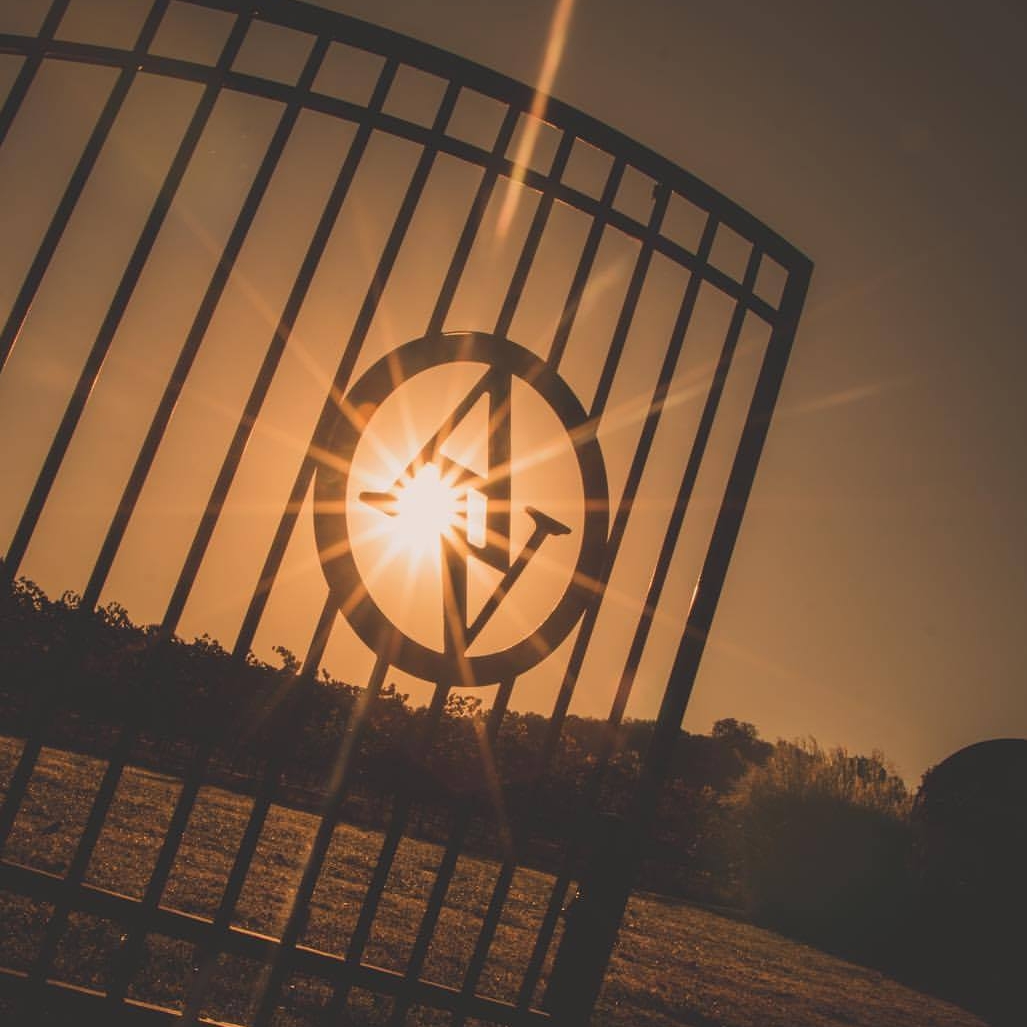
Jazz on the Hillside
Sunday, June 1 – 1:00-5:00 PM – The Lilliston Effect
Friday, June 6 – 4:30-8:30 PM – Art Four Sale
Saturday, June 7 – 3:00-7:00 PM – The Lilliston Effect
Sunday, June 8 – 1:00-5:00 PM – Triple Dare Jazz Band
Friday, June 13 – 4:30-8:30 PM – San Rafael Band
Saturday, June 14 – 12:00 PM (Coinciding with Crawfish Festival) – The Accords & Andrew Carney Quartet
Sunday, June 15 – 1:00-5:00 PM – The Lilliston Effect
Friday, June 20 – 4:30-8:30 PM – Art Four Sale Band
Saturday, June 21 – 3:00-7:00 PM – The Lilliston Effect
Sunday, June 22 – 1:00-5:00 PM – Triple Dare Jazz Band
Friday, June 27 – 4:30-8:30 PM – TBD
Saturday, June 28 – 3:00-7:00 PM – 9 Volt Romeo Band
Sunday, June 29 – 1:00-5:00 PM – Art Four Sale Band
Jazz on the Lawn
Sunday, June 1 – 1:00-5:00 PM – Andrew Carney Quartet
Saturday, June 7 – 3:00-7:00 PM – 9 Volt Romeo Band
Sunday, June 8 – 1:00-5:00 PM – Josh Karas Trio
Saturday, June 14 – 1:00-5:00 PM – The Lilliston Effect
Sunday, June 15 – 1:00-5:00 PM – 9 Volt Romeo Band
Saturday, June 21 – 3:00-7:00 PM – 9 Volt Romeo Band
Sunday, June 22 – 1:00-5:00 PM – The Lilliston Effect
Saturday, June 28 – 3:00-7:00 PM – Miles Damaso Group
Sunday, June 29 – 1:00-5:00 PM – Andrew Carney Quartet
City Winery Nashville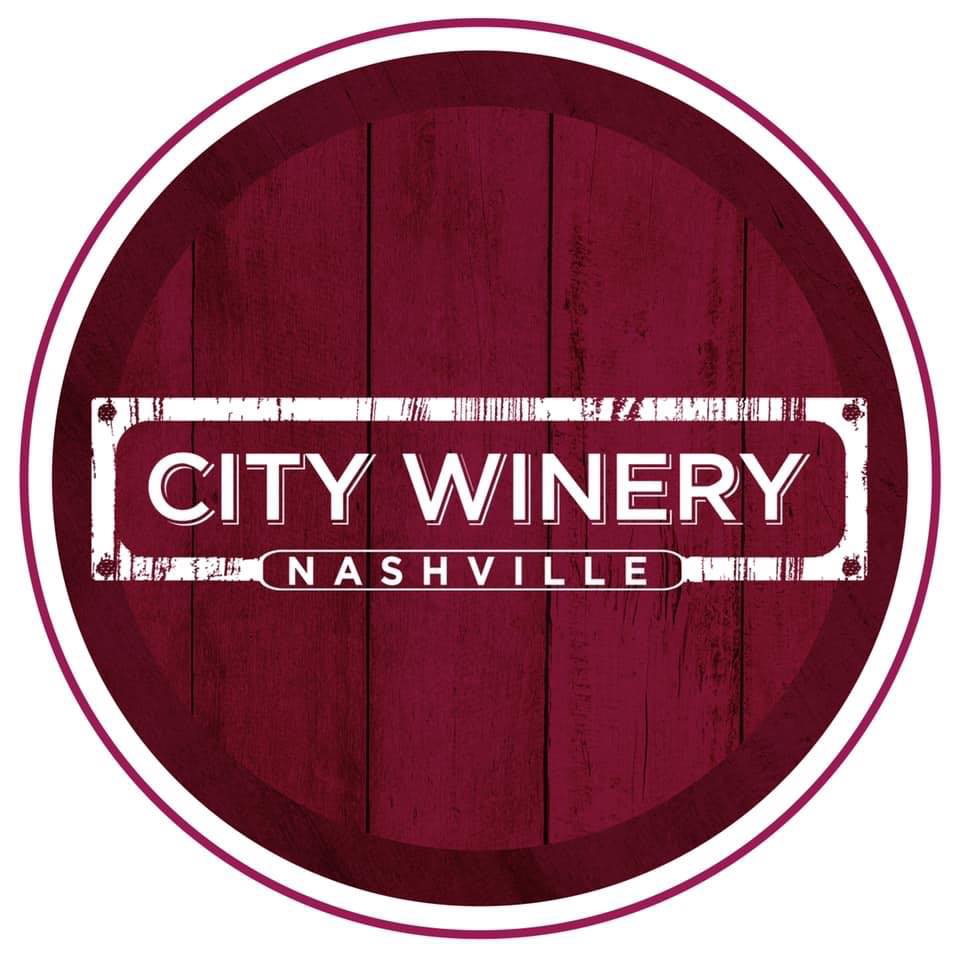
Nashville’s City Winery is a beautiful venue that consistently features top-talent acts that span genres from Jazz to Americana to Hip Hop. The below performances showcase a mix of several genres, but will certainly be of interest to any jazz audience. Enjoy these concerts accompanied by a stellar selection of wine and delicious bites.
Main Stage
Charlie Musselwhite Duo – detailed above
Boney James (2 sets) – Tuesday, June 17 – 6:00 PM & 9:30 PM ($85-105)
Saxophonist, composer, and producer Boney James comes to City Winery for two shows in promotion of his latest album, Slow Burn, released in the fall of last year. It is James’s nineteenth record, and among his many accolades over his career are four Grammy nominations, three NAACP Image Award nominations, and four RIAA Gold Record certifications, among others.
The Nashville Jazz Workshop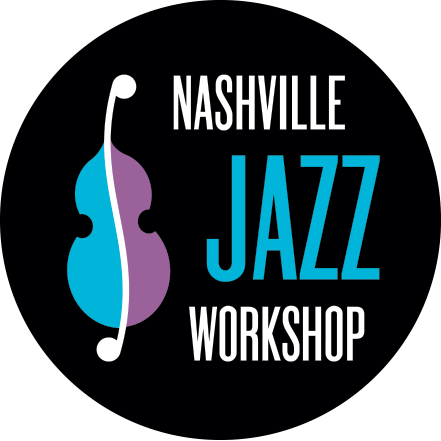
Moving on to Music City’s other great jazz venue, the Jazz Cave at the NJW is a venue with world-class acoustics, which consistently ranks in Downbeat Magazine’s list of Great Jazz Venues in the world. Tickets can be purchased through the Workshop website.
Jazz Cave
Jazz on Buchanan: Concurrence – Thursday, June 5 – 5:30 PM (FREE)
In the first of the NJW’s free concert series, the duo Concurrence brings their experimental improvisation to the Cave. Concurrence consists of pianist/keyboardist Paul Horton (Brittany Howard, Alabama Shakes) and bassist/broadcaster Greg Bryant, who come together to create a highly improvisational music duo but also a research collective. The band’s newest project, Indivisible, focuses on an overlooked era of American history, the creation of the Interstate system, which with all its successes also irrevocably altered Black and Brown communities across the country.
Chris Walters – Friday, June 6 – 7:30 PM ($35)
Acclaimed pianist and composer Chris Walters returns to the Cave, presenting an evening of his original music, ranging from high-energy swing and modern jazz to film noir-inspired mood pieces. He will also present the first two movements of his original piano concerto, re-imagined for a small-group setting. His band will feature top Nashville talent, including Dan Hitchcock on tenor sax and clarinet, Jack Aylor on bass, and Chris Brown on drums.
Jeff Hamilton Trio – detailed above
Mike Seal Jazz Guitar Masterclass – Sunday, June 15 – 2:00-4:00 PM ($50)
Two-time Grammy-nominated guitarist Mike Seal gives a special jazz guitar masterclass in the Cave. Seal is an in-demand guitarist, having performed on dozens of records and toured the world with a long list of artists. His work can be heard with the Jeff Coffin Mu-tet, the Jerry Douglas Band, the Viktor Krauss Group, and many more. Topics covered in the class will include functional music theory, ear training and development, and technique building.
Jazz on Buchanan: Katie Blomarz-Kimball – Thursday, June 26 – 5:30 PM (FREE)
In the second of these free concerts this month, bassist Katie Blomarz-Kimball performs. Known for her versatility, she has performed across genres, including everything from folk and Western swing to Americana and jazz. She is the newest member of the Grammy-nominated bluegrass band Sister Sadie, and she has performed on some of music’s most iconic stages.
John Arruci Trio w/ Jon Cowherd & Viktor Krauss – Friday, June 27 – 7:30 PM ($35)
After a successful debut as leader on vibraphone the last time he performed at the Jazz Cave, percussionist John Arruci now returns, this time leading his trio from the drumset. He will be joined by jazz powerhouses Jon Cowherd on piano and Viktor Krauss on bass.
Rudy’s Jazz Room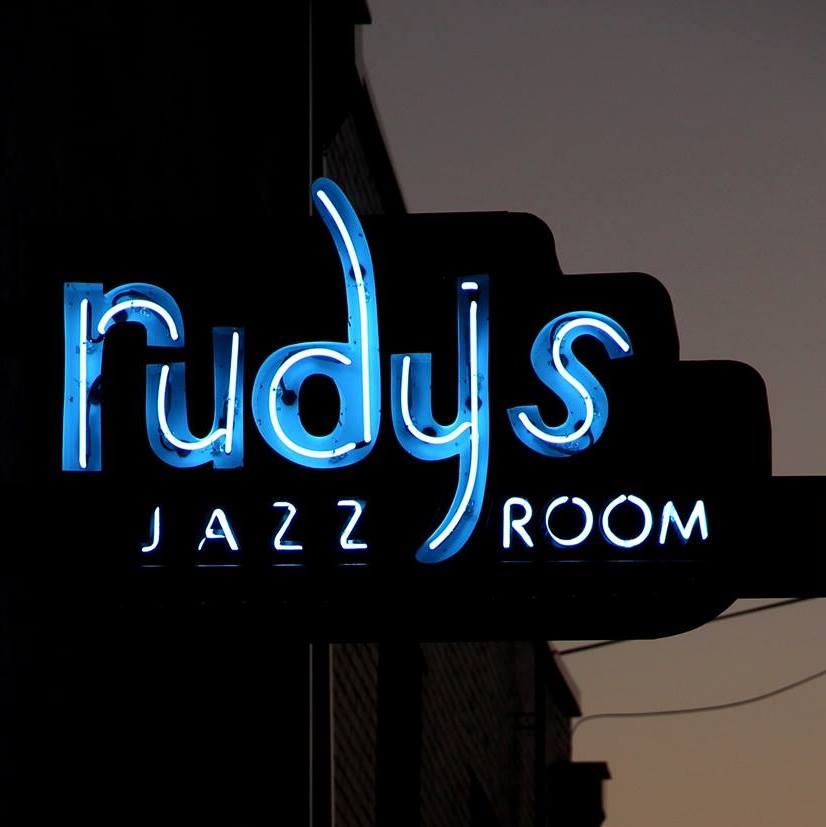
And now we move on to Nashville’s premier jazz club, with its cozy, intimate setting. I’ll start with some of the unique highlights for this month, then follow up with the great regular acts performing. Please note that some shows are one dollar cheaper if you purchase advance tickets. I have listed the door price for all shows.
Rudy’s Highlights
Below are the performances for this month that I’ve picked out as the real can’t-miss shows, some featuring touring artists from out of state, others featuring local artists giving specialized, unique performances. With the new year there are many new faces and new combinations appearing at Rudy’s this month, so now is the perfect time to catch a great new show!
Matt Rollings Trio – detailed above
Ryan Middagh – Wednesday, June 4 – 6:00 PM ($14)
Saxophonist, composer, arranger, band leader, and educator extraordinaire Ryan Middagh performs. Middagh is a Nashville mainstay, teaching at Vanderbilt University and leading the Ryan Middagh Jazz Orchestra, featuring some of Nashville’s finest musicians playing many of Middagh’s innovative compositions and arrangements. His album Live From Nashville is a Global Music Award recipient.
Rougarou 6-Piece New Orleans Brass Band – Thursday, June 5 – 9:00 PM ($14)
Continuing its running “SINdustry night” series on the first Thursday of the month, this New Orleans-style brass band returns to Rudy’s to showcase the club’s Cajun roots. Led by New Orleans native Chris Walters on piano, this band offers as authentic a brass band experience you can find without traveling to the French Quarter. Service industry workers with some form of proof of their employment will receive half off the door price and half price draft been.
Sarah Jane Nelson – Friday, June 6 – 5:30 PM ($20)
Vocalist Sarah Jane Nelson combines influences from country, jazz, blues, and musical theater for a unique voice that has earned her descriptions as a “knock-‘em dead singer,” “sultry jazz goddess,” and “a first rate singer”.
MF Art of Listening – Friday, June 6 – 8:00 PM ($22)
This highly improvisational group makes its return to Rudy’s, led by drummer Marcus Finnie, who has assembled a highly talented group of musicians to create this unique experience. Finnie himself has toured the world with a host of artists, including Keb’ Mo’, Taj Mahal, Donna Summer, Billy Preston, and many more.
Eli Ibrahim Quintet – Friday, June 6 – 11:00 PM ($10)
Pianist Eli Ibrahim and his quintet perform, exploring the rich intersection of blues and jazz.
Jimmy Sullivan’s Swingin’ Scene – Saturday, June 7 – 5:30 PM ($16)
One of Nashville’s most exciting jazz bassists, Jimmy Sullivan, takes the early Saturday set for a selection of hard-swinging jazz. If you’re a frequenter of Rudy’s, you’ll probably recognize Sullivan from his bi-monthly residency here on Sundays. Over his illustrious career he has performed with top jazz talents like Laila Biali, Nicole Zuraitis, Joel Frahm, and many more.
Alex Murphy w/ Brian Brown & Jarren Blair – Saturday, June 7 – 11:00 PM ($10)
Rising star pianist Alex Murphy performs in a trio setting with Brian Brown and Jarren Blair.
Lindsey Miller Quartet – Sunday, June 8 – 6:00 PM ($12)
Guitarist Lindsey Miller returns to Rudy’s leading a quartet featuring Chris Walters on keys, Jimmy Sullivan on bass, and Josh Hunt on drums. Miller has been a steady session and touring guitarist across a wide array of genres. Based in Music City since 2012, she has toured with artists like Brett Eldredge and Kevin Max, and performed on records for Brian Blade, Dennis Chambers, and more.
Joshua Constantine Quartet – Monday, June 9 – 6:00 PM ($12)
Saxophonist Constantine is a former member of Grammy-nominated UNT One O’Clock Lab Band, and student of world-renowned saxophonist Brad Leali. Currently an active performer and educator in Nashville, Constantine tends to pay homage to the classic giants of jazz, honoring composers and performers like John Coltrane, Thelonius Monk, Wayne Shorter, and more. His band features Sam Smith (bass), Michael Green (drums), and Dan La Maestra (piano).
Kyle Cox, Abigail Flowers & Tabitha Meeks: New Jazz for Old Souls – Wednesday, June 11 – 6:00 PM ($15)
These three top vocalists and songwriters present an evening of original vocal jazz works, with Katie Blomarz-Kimball on bass, Will Padgett on piano, Ian Stronbino on drums, and Dan Hitchcock on saxophone and clarinet.
Bruce Dudley Quartet: Music from Underground & Nefertiti – Thursday, June 12 – 9:00 PM ($15)
Bruce Dudley is an accomplished and acclaimed jazz pianist who is a Steinway Concert Artist and has been performing jazz for over forty years with many recording credits to his name, both as sideman and bandleader. In this special concert, Dudley’s quartet, featuring Don Aliquo (sax), Jack Aylor (bass), and Ryan Brasley (drums), will present music from two specific landmark jazz albums, Thelonius Monk’s Underground and Miles Davis’s Nefertiti.
Naama Quartet: Dream with Me (2 shows) – detailed above
Andrew Carney and the Essentials – Friday, June 13 – 5:30 PM ($14)
Acclaimed trumpeter and flugelhornist leads his band the Essentials. Carney has been playing both instruments professionally since he was fifteen, and in addition to his impressive performance chops, he is also a composer, songwriter, arranger, and educator, and his music has been featured in commercials for Google, Nutra Systems, the LA Times, and more.
Steve Pardo Quartet – Saturday, June 14 – 5:30 PM ($16)
Acclaimed videogame composer Steve Pardo leads an eclectic modern jazz quartet with Pardo on saxophone and FX, Jonathan Rogerson on guitar, Jon Estes on bass, and Mark Raudabaugh on drums. Blending traditional jazz music with the contemporary videogame music landscape, this should make for an interesting performance!
Marc Payne Quartet – Saturday, June 14 – 11:00 PM ($10)
One of Nashville’s most talented up-and-coming pianists Marc Payne will lead his trio. Payne has been praised for his diversity and wide knowledge of many jazz styles. He has spent his life in Nashville soaking up many different sounds and styles, and this diversity comes through in his masterful playing.
sd Murphy: Exploring the Piano Trio – Monday, June 16 – 6:00 PM ($15)
Pianist Alex Murphy brings his trio for the next installment of his Exploring the Piano Trio series, focusing on the tradition of this group format specifically.
Juneteenth w/ MF Art of Listening – Thursday, June 19 – 9:00 PM ($15)
Described above, Marcus Finnie’s band plays a special concert in celebration of the Juneteenth holiday.
Andy Reiss Quintet – Friday, June 20 – 5:30 PM ($15)
Grammy-winning guitarist Andy Reiss leads a stellar quintet of some of Nashville’s top musicians, including Roland Barber (trombone), Dan Hitchcock (reeds), Roger Spencer (bass), and Chris Brown (drums). Reiss, a member of the Time Jumpers, is a prolific recording session musician in Nashville, having recorded with greats like Slim Pickens, Pig Rofbbins, and Rebe McEntire, among others. His long career and life in music has given him a wide range of influences, from Jimi Hendrix and the Grateful Dead to Charlie Christian and Joe Pass.
Jon Cowherd w/ Ryan Scott, Mike Elizondo & Aaron Sterling – Friday, June 20 – 8:00 PM ($21)
NYC-based pianist Jon Cowherd leads a quartet to showcase his original compositions. Cowherd has worked with an extensive roster of artists, players, and singers across the jazz, pop, and rock genres. In addition to his longtime collaboration with drummer Brian Blade and his band the Brian Blade Fellowship, Cowherd has also released several albums under his own name, featuring his innovative original works.
Daniel Kuk Trio – Friday, June 20 – 11:00 PM ($10)
Daniel Kuk is a young up-and-coming pianist who, as you can tell from other lineups listed in this newsletter, is already making waves in the scene and proving himself in-demand. He has lived in Nashville most of his life, and started studying music at a very early age. His major influences include Bill Evans, McCoy Tyner, and Bud Powell. His trio will feature Baily Johnstone on bass and Kirk Woodward on drums.
Shaun Munday – Saturday, June 21 – 5:30 PM ($12)
Bassist Shaun Munday returns to the Rudy’s stage with his full band. Munday has studied and performed with some of the industry’s greats, including John Mayer, Esperanza Spalding, and Antonio Sanchez, among others.
Jerome Degey & Friends – Sunday, June 22 – 6:00 PM ($15)
Guitarist Jerome Degey returns to Rudy’s. Originally from Paris, France, Degey has a family history that is both French and Afro-Caribbean, and his wide geographical influences come out in his unique style of playing. He has collaborated with a wide array of artists, including Jonathan Edwards, Duffy Jackson, Daniel Levy, and many more.
Wendy Burns & Paul Childers “Jazz’s Greatest Duets” Encore Show – Thursday, June 26 – 9:00 PM ($18)
This popular show returns to Rudy’s. Burns is a jazz vocalist and flutist who specializes in songs from the 1940’s Big Band era. Childers is a vocalist and guitarist who manages to blend the styles of Jimi Hendrix on guitar with traditional jazz vocal melodies.
An Intimate Evening with LaLa Deaton – Friday, June 27 – 5:30 PM ($16)
Eclectic Nashville vocalist and songwriter LaLa Deaton leads her band playing a mix of jazz standards and her original music, which spans the pop, country, and jazz genres. She has released four studio albums, all of which have received high praise and awards.
Pascal’s Triangle w/ Special Guests – Friday, June 27 – 8:00 PM ($20)
Pascal Le Boeuf is a Grammy-nominated composer, pianist, and electronic artist who embraces modern technology and contemporary movements in his music. Pascal’s Triangle is a genre-bending group that features Linda June Han Oh on bass and Justin Brown on drums. This performance will also feature several special guests.
The Jordan Perlson Trio – detailed above
Lisa Stewart And Her Jazz Combo – Saturday, June 28 – 5:30 PM ($16)
Lisa Stewart has been praised as having “impressively eclectic musical chops” and an “honest, genre-spanning affection” for her music. Her combo will featuring Alex Murphy on piano, Jack Aylor on bass, and Ryan Brasley on drums.
Rudy’s Regulars
Re-Evolution – Mondays, June 2, 23, & 30 – 6:00 PM ($12)
This five-piece band is heavily influenced by classic jazz cutting-edge artists like Thelonius Monk, Wes Montgomery, John Coltrane, Bill Evans, and more. The band consists of Brian Cornish on saxophone, Regi Wooten on bass, Daryl Johnson on drums, Adam Charney on guitar and Alex Murphy on piano.
Don Aliquo (multiple performances)
One of Nashville’s most active and accomplished saxophonists, Aliquo will be leading performances several times this month, both in trio and quartet format.
Don Aliquo Quartet – Saturday, June 7 – 8:00 PM ($20)
Don Aliquo Trio (multiple shows)
Friday, June 13 – 11:00 PM ($10)
Saturday, June 21 – 11:00 PM ($10)
Sully’s Swingin’ Sunday Supper – Sunday, June 15 – 6:00 PM ($12)
Every other Sunday, Rudy’s features a Sunday dinner, with one of Music City’s top bassists Jimmy Sullivan leading a swingin’ jazz band featuring rotating special guests, for which a unique dinner special is served just for the show.
Bizz Bigsby – Wednesday, June 18 – 6:00 PM ($15)
Nashville native Bizz Bigsby shares his very personal music which tells the story of his life, influenced by everyone from Bill Withers to George Jones to James Taylor.
Pat Coil Quintet – Saturday, June 21 – 8:00 PM ($22)
All-star Nashville pianist Pat Coil returns with a quartet performances, though both of these will feature a special guest guitarist performing with the trio. As you all probably know by now, Coil is a highly in-demand pianist in Nashville and just about everywhere else, having toured extensively both nationally and internationally. This quintet performance will feature Mark Douthit (guitar), Barry Green (trombone), Brian Allen (bass), and Wes Little (drums).
Dana Robbins Quintet – Wednesday, June 25 – 6:00 PM ($12)
GRAMMY-winning saxophonist Dana Robbins pays tribute to the Soul Jazz sound of the late 60’s and early 70’s, celebrating artists such as Les McCann, Eddie Harris, Jimmy Smith, and more. Robbins has either recorded or performed with many artists, including Keb’ Mo’, Aretha Franklin, Taj Mahal, Keith Urban, and more. Her band features David Santos (bass), Wes Little (drums), Phil Hughley (guitar), and Darius Mines (piano/B3 organ).
Jody Nardone Trio – Saturday, June 28 – 8:00 PM ($28)
Prominent Nashville pianist Jody Nardone brings his trio to Rudy’s for a classic jazz set. With a growing national reputation, Nardone seamlessly shifts from the “whispered beauty of Bill Evans to the percussive flights of McCoy Tyner.” (Michael McCall, Nashville Scene)
Geoff Pfeifer Quartet – Saturday, June 28 – 11:00 PM ($10)
Playing a mix of Wayne Shorter tunes and originals, Geoff Pfeifer brings gritty, edgy, genuine NYC-style jazz to Rudy’s stage with his Quartet.
Stephanie Adlington – Sunday, June 29 – 6:00 PM ($15)
Another frequent visitor to the Rudy’s stage, award-winning vocalist, songwriter and vocal coach Stephanie Adlington is known as the “Siren of the South,” with an “unrivaled” take on the Great American Songbook.
Regi Wooten & Friends – Every Wednesday – 9:00 PM ($15)
Coming from a distinctly talented musical family, Regi Wooten is one of the most innovative and dynamic musicians on the scene today, pushing the boundaries of the traditional genres. Equally at home playing Hendrix as Wes Montgomery, Wooten assembles a group of some of Nashville’s best musicians to offer a night steeped in funk, jazz, soul, blues and rock.
Giovanni Rodriguez & 12 Manos – Every Monday – 9:00 PM ($15)
A favorite on the Nashville Latin and jazz scene, multi-instrumentalist Giovanni Rodriguez presents an electric night of salsa, along with his band consisting of Rodriguez (timbales/vocals), Melvin Macias (piano/vocals), Yosvany Cordero (congo/bongo), Michael S. Morton (flute/vocals), and Isoel Villarrubia (bass).
Hot Club Gypsy Jazz – Every Thursday – 6:00 PM ($12)
Every Thursday night, Rudy’s honors its New Orleans and French roots by celebrating the vibrant music of Gypsy Jazz. These nights feature a variety of small groups either led or curated by New Orleans native Brook Sutton, all performing music in the style of the great Django Reinhardt and Stephane Grapelli. The bar will feature French Quarter-inspired cocktails as well as gumbo and beignets. Come out for as authentic a night as you can get without a trip to the French Quarter.
Rudy’s Jazz Jam – Every Sunday – 9:00 PM ($10)
I couldn’t make a list of Rudy’s events without including a shout-out for the regular weekly Jazz Jam the club hosts every Sunday night. Whether you are a jazz musician and you want to jam with your fellow artists, or you just want to come and enjoy what the local talent has to offer, the Jazz Jam is a great way to end your weekend.
The Underdog Nashville
Jack Ruch and Adam Wakefield Trio – Every Thursday– 7:00 PM ($10)
Jack Ruch returns this month with his organ trio, a classic jazz format.
Guthrie Trapp Trio – Every Monday (except June 2) – 8:00 PM ($10)
One of Nashville’s preeminent guitar talents will perform several times at the Underdog. More blues and country than jazz, Trapp’s intricate and highly technical guitar playing will surely interest those who love the technicality of jazz music. His trio features Jordan Perlson on drums and Tim Marks on bass.
Corey Congilio – Friday, June 13 – 8:00 PM ($10)
Guitarist and music educator extraordinaire Corey Congilio once again returns to the Underdog. I personally have always admired his playing, and this should be a great show!
Regular Nashville Hangs
Bohemia After Dark: Live Jazz Band with Andrew Golden – Every Monday – 8:00 PM (Old Glory)
Tuesday Bluesday w/ Shantelle & The Juke Joint Band – Every Tuesday – 6:30 PM (Rawhides)
Weekly blues night with a different special guest each week.
Dinner & A Show – Live Jazz Band – Every Friday – 7:00 PM (Flamingo Cocktail Club)
Living Room Sessions – Every Friday & Saturday – 8:00 PM (W Nashville Hotel)
Regular weekly showcase featuring local indie, jazz, funk, and R&B bands.
Eastside Jam – Every Sunday – 9:00 PM (Inglewood Lounge)
This is not a traditional jazz jam playing standards, but rather an improv jam, but any jazz player or listener will still be interested!
Live Jazz at Wilburn St. Tavern – Tuesday Evenings
Nightly Jazz at Skull’s Rainbow Room
Nightly Jazz at Sinatra Bar & Lounge
Live Jazz at Skye Lounge – Every Friday & Saturday – 7:30 PM
NJW at Char Steakhouse – Evenings and Sunday Brunch
A Night with the Nashville Symphony:
The Premiere of Winger’s Violin Concerto and the Music Barber and Copland

Versión en español aqui
This past weekend was an exciting time for new music in Nashville, with the Nashville Symphony’s premiere of C.F. Kip Winger’s Violin Concerto: In the Language of Flowers, during their Barber, Winger, and Copland concert. It was an entertaining performance that featured Samuel Barber’s Overture to The School for Scandal, as well as Aaron Copland’s Symphony No. 3, and concertmaster Peter Otto as violin soloist. This program was a great selection that played to music director Giancarlo Guerrero’s ability to evoke a wide range of emotions and characters from the orchestra.
The evening began with Barber’s Overture to The School for Scandal, a playful and harmonically broad work that the composer wrote at just 21 years old, as his first orchestral composition. Though composed years before his well-known Adagio for Strings, this piece is full of lyrical charm and rhythmic energy, not only representative of Barber’s style, but of Richard Brinsley Sheridan’s 1777 comedic play which inspired it. The orchestra’s strings and woodwinds bring the work’s melodic developments, like in the moments of solo oboe or accompanied clarinet, played wonderfully by principal oboist Titus Underwood and principal clarinetist Danny Goldman, respectively.
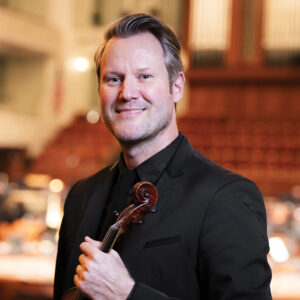
The most anticipated work on the program, the world premiere of Winger’s Violin Concerto followed, and I cannot begin to describe how anxiously I await the live recording – this piece (and its performance) was wonderful. The composer’s varied background is clearly reflected in the work. His early life was shaped by jazz and years studying dance with a ballet company, until he eventually ventured into rock with his own band, Winger, and collaborations with acts such as Alice Cooper. In 2017, the Nashville Symphony performed Winger’s ballet score Conversations with Nijinsky. Upon the positive reception of this performance, Guerrero invited Winger to write a symphony and concerto. In 2022, the Nashville Symphony premiered Winger’s Symphony No. 1, which the composer described himself as an autobiographical work “centered around the theme of atonement.” Though he began writing his violin concerto in 2019, it is not until the years following his concerto that he would complete most of the work, with the help of Peter Otto, the current concertmaster of the Nashville Symphony.
The first movement, titled “Forsythia,” opens with a violin cadenza, in which all the concerto’s four main themes are presented. Here, Otto suggests only a small sample of the virtuosic writing (and playing) that is to come with phrases of chromatic runs and arpeggios. Written in 7/8 time signature, Winger employs polyrhythm to build synergy between the soloist and orchestra. The second movement, “Viscaria,” is where the violin truly takes the front stage. In a rapid fashion, the violin often interrupts the orchestra with extravagant and rhythmically dense statements, like what one may find in a rock guitar solo. Otto takes full advantage of the writing, giving the audience no time to process the technical accuracy and prowise of his playing. This continues into the third movement, “Ambrosia.” Otto delights the audience with gentle lyrical playing of a subject which Winger himself considers his “all-time best melody.” Passionate, yet apprehensive, Shostakovich’s influence is particularly evident, here. The final movement, “Wisteria,” is the proper conclusion to a work so conflicted, full of contrast and skill. Otto’s attention to detail and care for subtly is on full display, here, and it is made clear that this piece was written with him in mind.
The program concluded with Copland’s Symphony No. 3. This was my first time listening to any of Copland’s symphonic works in-person, and it did not disappoint. The first movement opens with Copland’s signature Western sound, which he creates using widely spaced intervals and open textures of woodwinds, strings, and horns. The main theme is presented like a hymn, then quickly develops into a rhythmically driven and densely textured middle section. The orchestra has the keen ability to shift mood rapidly, making full textures appear, seemingly, out of nowhere and with ease. The second movement is a scherzo and is our first introduction to the Fanfare for the Common Man material that becomes increasingly present throughout the rest of the symphony. The dramatic nature of this movement lends itself to the orchestra’s brass sections, all capable of capturing a wide range of emotions. The trumpet section, led by principal William Leathers, especially realized Copland’s explosive and colorful writing, here. The third movement is slow and haunting. Its lyrical theme is reminiscent of the first movement, with brighter textures, though maintains a coldness throughout. The final movement immediately follows, with no pause. Here, the fanfare material from Fanfare for the Common Man reaches its peak, growing from the flutes then to the brass for an epic climax. Throughout the movement, the music breaks itself down then rebuilds, with not only a fanfare theme, but a 7/8 theme as well, clearly influenced by Latin-American rhythms. The orchestra truly shines at the climax of the movement, in the powerful return of the fanfare theme.
On the weekend of May 25th, Guerrero will conduct his final program as Music Director of the Nashville Symphony, titled “Guerrero’s Finale: Mahler’s Symphony of a Thousand.” The symphony will be performing Gustav Mahler’s colossal Symphony No. 8 (“Symphony of a Thousand”). It is sure to be an incredible experience and a fitting conclusion to Guerrero’s 16-year tenure with the Nashville Symphony.

